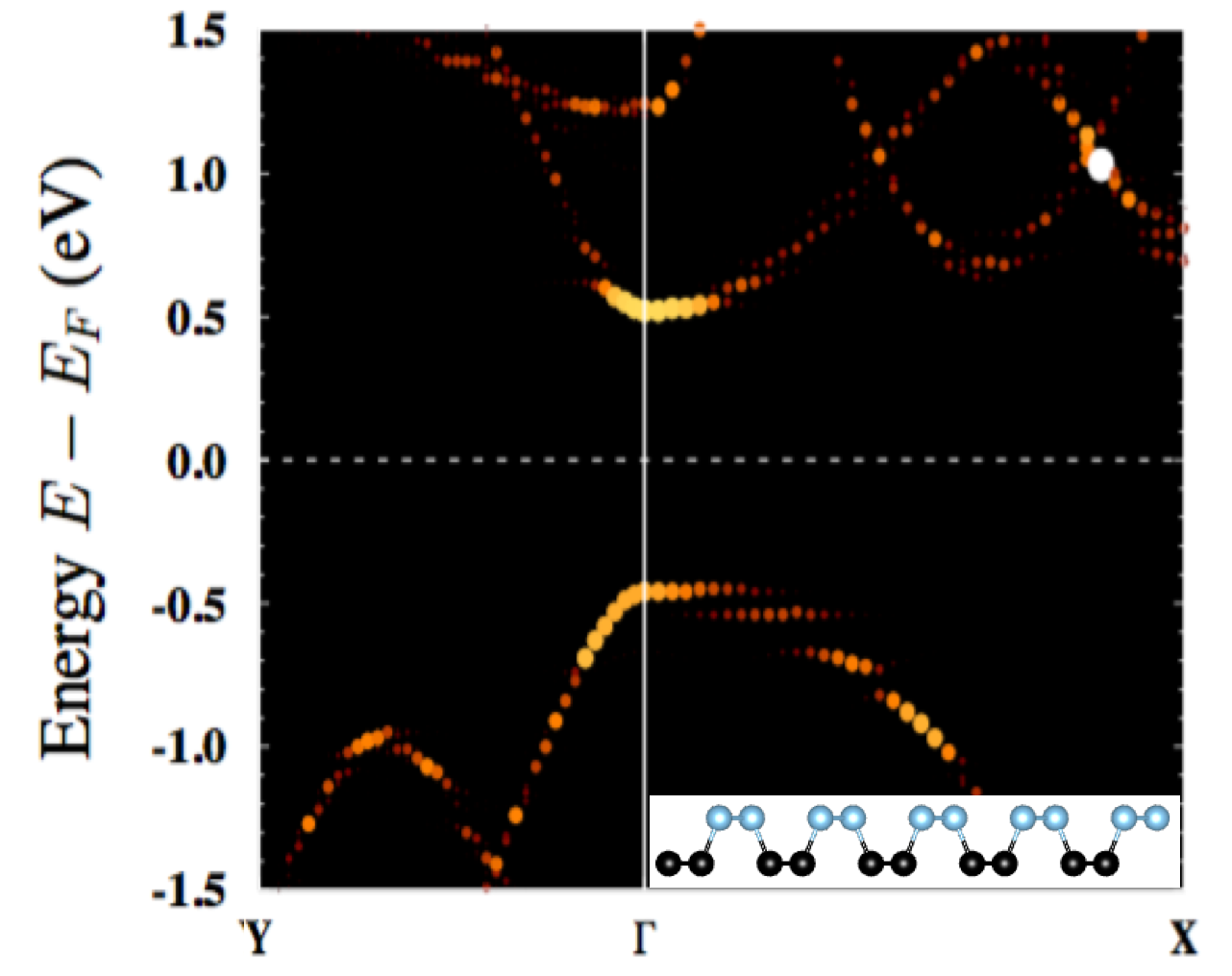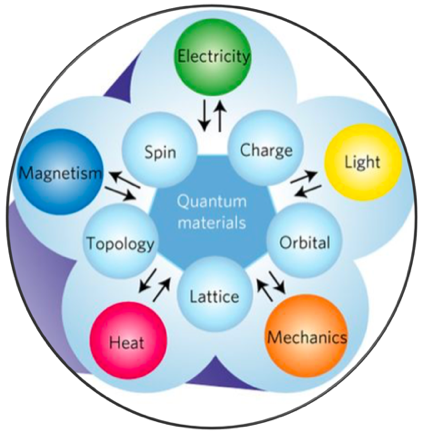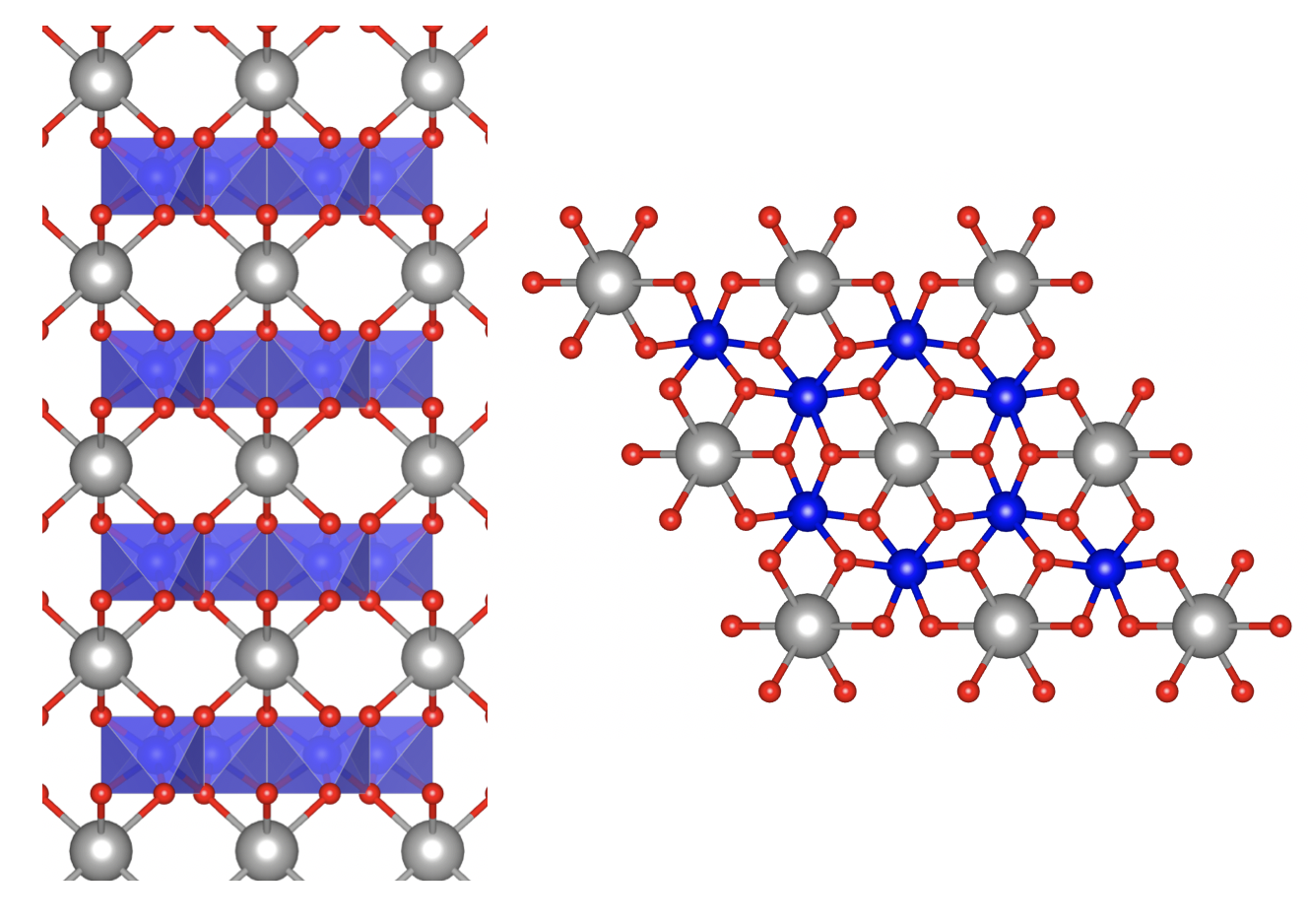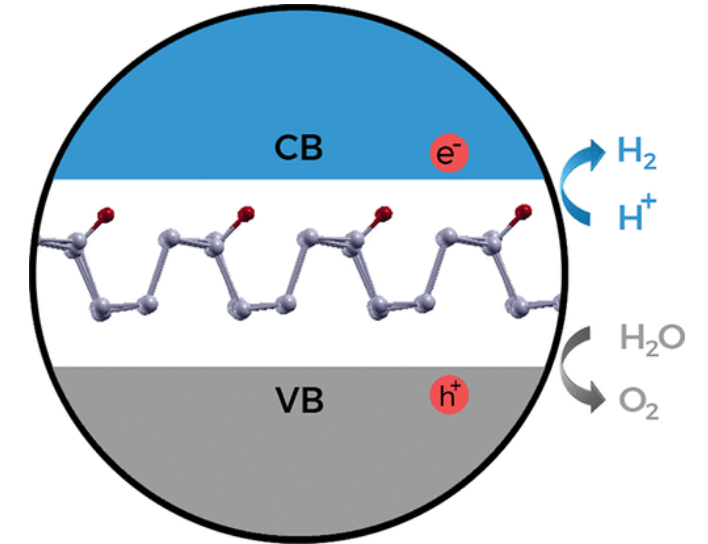|
|
| |
Two-dimensional Materials |  In 1946, the Canadian theoretical physicist P R Wallace predicted extraordinary electronic structure of the two-dimensional hexagonal honeycomb lattice of graphite called graphene.[1]
However, it took many decades in 2004 for its experimental realization, when physicists A Geim and K Novoselov successfully exfoliated one-atom-thick graphene by scotch tape method.[2,3]
Since then, researchers are fascinated by the quantum world of two-dimensional materials to know and exploit how electrons behave and interact in reduced dimension as opposed to the conventional three-dimensional world.
Many extraordinary two-dimensional materials have been discovered since such as transition-metal dichalcogenides, hexagonal boron nitride, phosphorene and oxides, to name a few.[4,5,6,7] In 1946, the Canadian theoretical physicist P R Wallace predicted extraordinary electronic structure of the two-dimensional hexagonal honeycomb lattice of graphite called graphene.[1]
However, it took many decades in 2004 for its experimental realization, when physicists A Geim and K Novoselov successfully exfoliated one-atom-thick graphene by scotch tape method.[2,3]
Since then, researchers are fascinated by the quantum world of two-dimensional materials to know and exploit how electrons behave and interact in reduced dimension as opposed to the conventional three-dimensional world.
Many extraordinary two-dimensional materials have been discovered since such as transition-metal dichalcogenides, hexagonal boron nitride, phosphorene and oxides, to name a few.[4,5,6,7]
|
|
|
| |
|
Strong electron correlation and band topology have led to the discovery of two-dimensional topological insulators, Dirac and Weyl semi-metals and superconductors.[8,9]
Further, easy tunability of their physical properties and enormous possibilities in van der Waals 'lego' heterostructures have led to the discovery of many emergent phenomena. If they live up to their applicable expectations, these two-dimensional materials have potential for disruptive technologies.
Our group is focused on investigating and exploiting electron correlation and band topology to study edge states, magnetism, superconductivity and topological states in two-dimension.[10,11,12,13,14,15,16,17,18]
|
|
|
Quantum Materials |
 Quantum many-body interactions among electrons, orbitals, spins, and crystal lattice along with the manifestation and interplay between strong interaction, quantum fluctuation, entanglement, topology, and reduced dimensionality often lead to exotic and emergent quantum phenomena.[1,2,3,4] The schematic demonstrating various degrees of freedom that can be manipulated by external perturbation is adopted from Ref.[5] Such quantum phenomena in materials must be exploited in the future quantum devices and operando control of spin, charge, orbital, lattice and topology will require concerted and collaborative quantum materials research and development efforts. Much progress in quantum materials relies on accurate simulation using quantum mechanical methods. We apply first-principles quantum theories to account for many-body interactions realistically, and correctly understand, predict and manipulate the collective and emergent phenomena in quantum materials in close collaboration with the experimental colleagues.
Quantum many-body interactions among electrons, orbitals, spins, and crystal lattice along with the manifestation and interplay between strong interaction, quantum fluctuation, entanglement, topology, and reduced dimensionality often lead to exotic and emergent quantum phenomena.[1,2,3,4] The schematic demonstrating various degrees of freedom that can be manipulated by external perturbation is adopted from Ref.[5] Such quantum phenomena in materials must be exploited in the future quantum devices and operando control of spin, charge, orbital, lattice and topology will require concerted and collaborative quantum materials research and development efforts. Much progress in quantum materials relies on accurate simulation using quantum mechanical methods. We apply first-principles quantum theories to account for many-body interactions realistically, and correctly understand, predict and manipulate the collective and emergent phenomena in quantum materials in close collaboration with the experimental colleagues.
|
|
|
Quantum Magnetism |
 The magnetism in materials, that has impacted our every-day life, arises from the spin degree of freedom of electrons, which is a quantum concept derived from Dirac's relativistic theory. Further, magnetic moments on a lattice interact via exchange interactions with competing electronic kinetic energy and Coulomb interaction leads to various magnetic phases. However, miniaturization of bulk magnetism into two-dimension was thought to be impossible following Hohenberg-Mermin-Wagner theorem until recently.[1,2,3]
Since magnetic anisotropy and long-range interaction breaks the continuous rotational symmetry of Heisenberg spin Hamiltonian, magnetism in two-dimension is possible at finite temperature, and indeed discovered very recently in Cr2Ge2Te6 and CrI3.[4,5]
This brings enormous opportunities to explore 2D magnetic states and exploiting them to control magnetic properties with various external perturbations.[6]
The bottleneck for the practical application at the moment is these 2D magnetic states lives at a very low temperature, while any practical applications will require their availability at room-temperature.
We are interested in the interplay of electronic kinetic energy, Coulomb interaction, and spin-orbit coupling to understand magnetism in strongly correlated bulk systems, 2D magnets and heterostructures, and proximate quantum spin liquid systems.
The magnetism in materials, that has impacted our every-day life, arises from the spin degree of freedom of electrons, which is a quantum concept derived from Dirac's relativistic theory. Further, magnetic moments on a lattice interact via exchange interactions with competing electronic kinetic energy and Coulomb interaction leads to various magnetic phases. However, miniaturization of bulk magnetism into two-dimension was thought to be impossible following Hohenberg-Mermin-Wagner theorem until recently.[1,2,3]
Since magnetic anisotropy and long-range interaction breaks the continuous rotational symmetry of Heisenberg spin Hamiltonian, magnetism in two-dimension is possible at finite temperature, and indeed discovered very recently in Cr2Ge2Te6 and CrI3.[4,5]
This brings enormous opportunities to explore 2D magnetic states and exploiting them to control magnetic properties with various external perturbations.[6]
The bottleneck for the practical application at the moment is these 2D magnetic states lives at a very low temperature, while any practical applications will require their availability at room-temperature.
We are interested in the interplay of electronic kinetic energy, Coulomb interaction, and spin-orbit coupling to understand magnetism in strongly correlated bulk systems, 2D magnets and heterostructures, and proximate quantum spin liquid systems.
|
|
|
Sustainable Energy Materials |
 Discovery and concurrent property optimization are necessary to mitigate future energy demands in a cleaner way. However, these processes are expensive and time-consuming, and it is recognized that the entire process would be more rapid and cost-effective if predictive mathematical modelling and simulations short-circuit the experimental efforts. We employ quantum chemical models with chemical accuracy to understand, predict and optimize materials, mainly for photocatalysis, energy conversion and storage. In these regards, we investigate phase stability, optical properties, excitons, and ionic diffusion; in close collaboration with experimental colleagues.[1,2,3,4,5,6,7,8]
Discovery and concurrent property optimization are necessary to mitigate future energy demands in a cleaner way. However, these processes are expensive and time-consuming, and it is recognized that the entire process would be more rapid and cost-effective if predictive mathematical modelling and simulations short-circuit the experimental efforts. We employ quantum chemical models with chemical accuracy to understand, predict and optimize materials, mainly for photocatalysis, energy conversion and storage. In these regards, we investigate phase stability, optical properties, excitons, and ionic diffusion; in close collaboration with experimental colleagues.[1,2,3,4,5,6,7,8]
|
|
|


 In 1946, the Canadian theoretical physicist P R Wallace predicted extraordinary electronic structure of the two-dimensional hexagonal honeycomb lattice of graphite called graphene.[
In 1946, the Canadian theoretical physicist P R Wallace predicted extraordinary electronic structure of the two-dimensional hexagonal honeycomb lattice of graphite called graphene.[ Quantum many-body interactions among electrons, orbitals, spins, and crystal lattice along with the manifestation and interplay between strong interaction, quantum fluctuation, entanglement, topology, and reduced dimensionality often lead to exotic and emergent quantum phenomena.[
Quantum many-body interactions among electrons, orbitals, spins, and crystal lattice along with the manifestation and interplay between strong interaction, quantum fluctuation, entanglement, topology, and reduced dimensionality often lead to exotic and emergent quantum phenomena.[ The magnetism in materials, that has impacted our every-day life, arises from the spin degree of freedom of electrons, which is a quantum concept derived from Dirac's relativistic theory. Further, magnetic moments on a lattice interact via exchange interactions with competing electronic kinetic energy and Coulomb interaction leads to various magnetic phases. However, miniaturization of bulk magnetism into two-dimension was thought to be impossible following Hohenberg-Mermin-Wagner theorem until recently.[
The magnetism in materials, that has impacted our every-day life, arises from the spin degree of freedom of electrons, which is a quantum concept derived from Dirac's relativistic theory. Further, magnetic moments on a lattice interact via exchange interactions with competing electronic kinetic energy and Coulomb interaction leads to various magnetic phases. However, miniaturization of bulk magnetism into two-dimension was thought to be impossible following Hohenberg-Mermin-Wagner theorem until recently.[ Discovery and concurrent property optimization are necessary to mitigate future energy demands in a cleaner way. However, these processes are expensive and time-consuming, and it is recognized that the entire process would be more rapid and cost-effective if predictive mathematical modelling and simulations short-circuit the experimental efforts. We employ quantum chemical models with chemical accuracy to understand, predict and optimize materials, mainly for photocatalysis, energy conversion and storage. In these regards, we investigate phase stability, optical properties, excitons, and ionic diffusion; in close collaboration with experimental colleagues.[
Discovery and concurrent property optimization are necessary to mitigate future energy demands in a cleaner way. However, these processes are expensive and time-consuming, and it is recognized that the entire process would be more rapid and cost-effective if predictive mathematical modelling and simulations short-circuit the experimental efforts. We employ quantum chemical models with chemical accuracy to understand, predict and optimize materials, mainly for photocatalysis, energy conversion and storage. In these regards, we investigate phase stability, optical properties, excitons, and ionic diffusion; in close collaboration with experimental colleagues.[